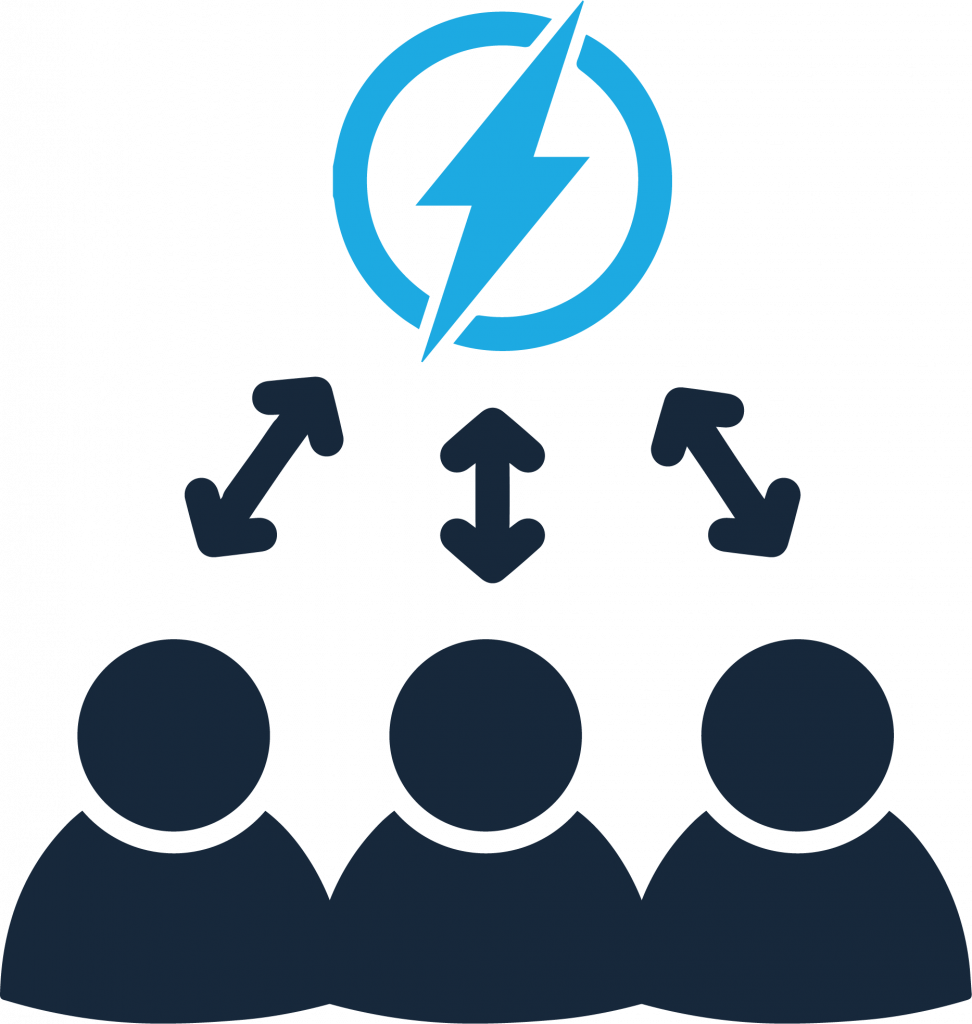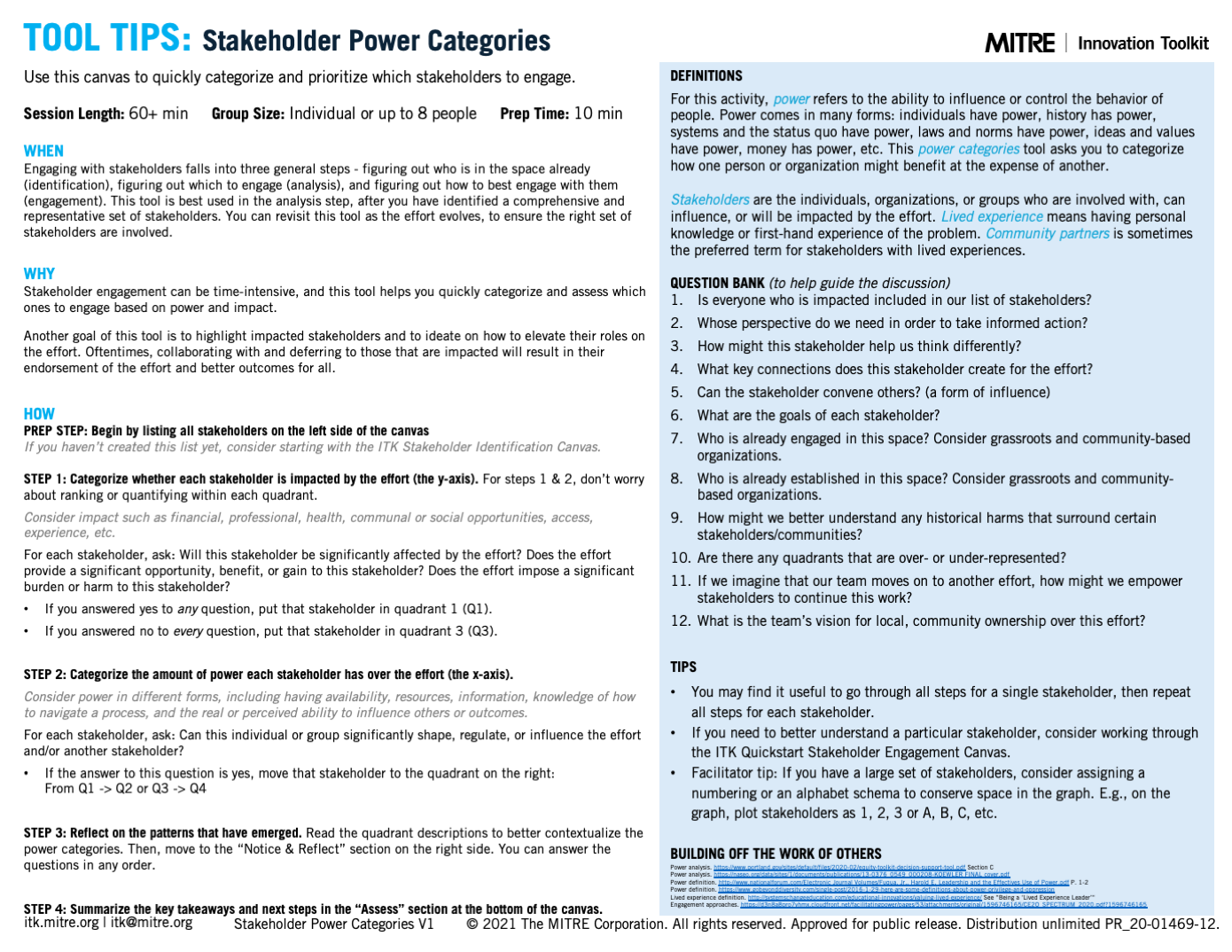Stakeholder Power Categories |
 |
What is it
- Use this canvas to quickly categorize and prioritize which stakeholders to engage based on power and impact.
- Highlight impacted stakeholders and ideate on how to elevate their roles on the effort
Why use it
- When figuring out which stakeholders to engage after you have identified a comprehensive and representative set of stakeholders.
- You can revisit this tool as the effort evolves, to ensure the right set of stakeholders are involved.
When to use it
Collaborating with stakeholders and deferring to those that are impacted will results in their endorsement of the effort and better outcomes for all
Level
Intermediate
Outcome
Scope
Group Size
1+ people
Suggested Time
60+ minutes
Stakeholder Power Categories Worksheet
How to do it
Prep Step
Begin by listing all stakeholders on the left side of the canvas. If you haven’t created this list yet, consider starting with the ITK Stakeholder Identification Canvas.
STEP 1
Categorize whether each stakeholder is impacted by the effort (the y-axis). For steps 1 & 2, don’t worry about ranking or quantifying within each quadrant. Consider impact such as financial, professional, health, communal or social opportunities, access, experience, etc.
For each stakeholder, ask:
- Will this stakeholder be significantly affected by the effort?
- Does the effort provide a significant opportunity, benefit, or gain to this stakeholder?
- Does the effort impose a significant burden or harm to this stakeholder?
If you answered yes to any question, put that stakeholder in quadrant 1 (Q1). If you answered no to every question, put that stakeholder in quadrant 3 (Q3).
STEP 2
Categorize the amount of power each stakeholder has over the effort (the x-axis). Consider power in different forms, including having availability, resources, information, knowledge of how to navigate a process, and the real or perceived ability to influence others or outcomes.
For each stakeholder, ask:
- Can this individual or group significantly shape, regulate, or influence the effort and/or another stakeholder?
If the answer to this question is yes, move that stakeholder to the quadrant on the right: From Q1 -> Q2 or Q3 -> Q4
STEP 3
Reflect on the patterns that have emerged. Read the quadrant descriptions to better contextualize the power categories. Then, move to the “Notice & Reflect” section on the right side. You can answer the questions in any order.
STEP 4
Summarize the key takeaways and next steps in the “Assess” section at the bottom of the canvas.
Benefits
Used to openly discuss and evaluate power dynamics for a set of stakeholders.
Challenges
Talking explicitly about power can be uncomfortable for some audiences.
Combine With
- Use Stakeholder Identification Canvas or Community Map to help ideate a set of stakeholders
- Use Stakeholder Map & Matrix to help prioritize which stakeholders you want to engage
- Use Quickstart Stakeholder Engagement to help develop next steps to engage with each stakeholder


